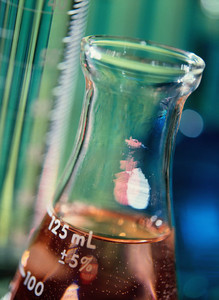By 2020 biological products with sales of around US$23 billion in the EU and US$29 billion in the US will be exposed to biosimilar competition [1]. As more and more biologicals lose their patent protection, it is no wonder that Big Pharma, the biotechnology industry and generics manufacturers, as well as regulatory agencies, are becoming increasingly interested in biosimilars [2].
Development of biosimilars is not an easy matter
Biosimilars/Research
|
Posted 28/10/2011
 0
Post your comment
0
Post your comment

While small molecule drugs are ideal for generics replication, biological drugs are not so simple. Biological drugs are usually large, complex molecular structures derived from or produced through a living organism, making them very difficult to replicate.
Development of biologicals is difficult and often variable, as even small changes in the manufacturing process can cause changes in the final product, making things even more complicated for potential biosimilars [3]. The complexity and heterogeneity of the molecular structure, complicated manufacturing process, different analytical methods, and possibility of severe immunogenicity reactions make quantitative evaluation of biosimilars a challenge for both the scientific community and regulatory agencies.
Biosimilars are known to be variable and very sensitive to environmental conditions, such as light and temperature. Even a small variation may affect safety and efficacy. Some of the major differences between small molecule drugs and biologicals are summarised in Table 1.
Table 1: Fundamental differences between small molecule drugs and biologicals
| Small molecule drugs | Biologicals | |
| Synthesis | Chemical | Made in living cells |
| Structure | Well-defined | Heterogeneous Mixtures of related molecules |
| Characterisation | Easy | Difficult |
| Stability | Relatively stable | Variable Sensitive to environmental conditions, e.g. light and temperature |
| Immunogenicity | Not an issue | Can be a problem |
| Method of dosing | Orally | Injection |
| Prescribing | Doctor | Specialist |
In the two articles that follow, an overview of current criteria, study design and statistical methods for quantitative evaluation of bioequivalence for traditional small molecule generics and biosimilarity for biosimilar products are given. In addition, the concept of interchangeability, along with switching and alternating between biosimilar and originator products are discussed.
References
1. GaBI Online - Generics and Biosimilars Initiative. Biosimilars: barriers to entry and profitability in the EU and US [www.gabionline.net]. Mol, Belgium: Pro Pharma Communications International; [cited 2011 October 28]. Available from: www.gabionline.net/Biosimilars/Research/Biosimilars-barriers-to-entry-and-profitability-in-the-EU-and-US
2. Chow SC. Quantitative evaluation of bioequivalence/biosimilarity. J Bioequiv Availab. 2011; S1. doi:10.4172/jbb.S1-002
3. GaBI Online - Generics and Biosimilars Initiative. Current status of biosimilar development [www.gabionline.net]. Mol, Belgium: Pro Pharma Communications International; [cited 2011 October 28]. Available from: www.gabionline.net/Biosimilars/General/Current-status-of-biosimilar-development
News
FDA approves six denosumab biosimilars
EMA recommends approval for four biosimilars targeting three therapies
General
Samsung Bioepis wins Pyzchiva case; Regeneron patent rulings threaten foreign biosimilars
Chinese biosimilars go global: growth, partnerships, and challenges
What is the future for the US biosimilar interchangeability designation

Biosimilars/Research Posted 05/06/2025
Biosimilar clinical efficacy studies: are they still necessary?

Biosimilars/Research Posted 27/05/2025
The best selling biotechnology drugs of 2008: the next biosimilars targets








Post your comment